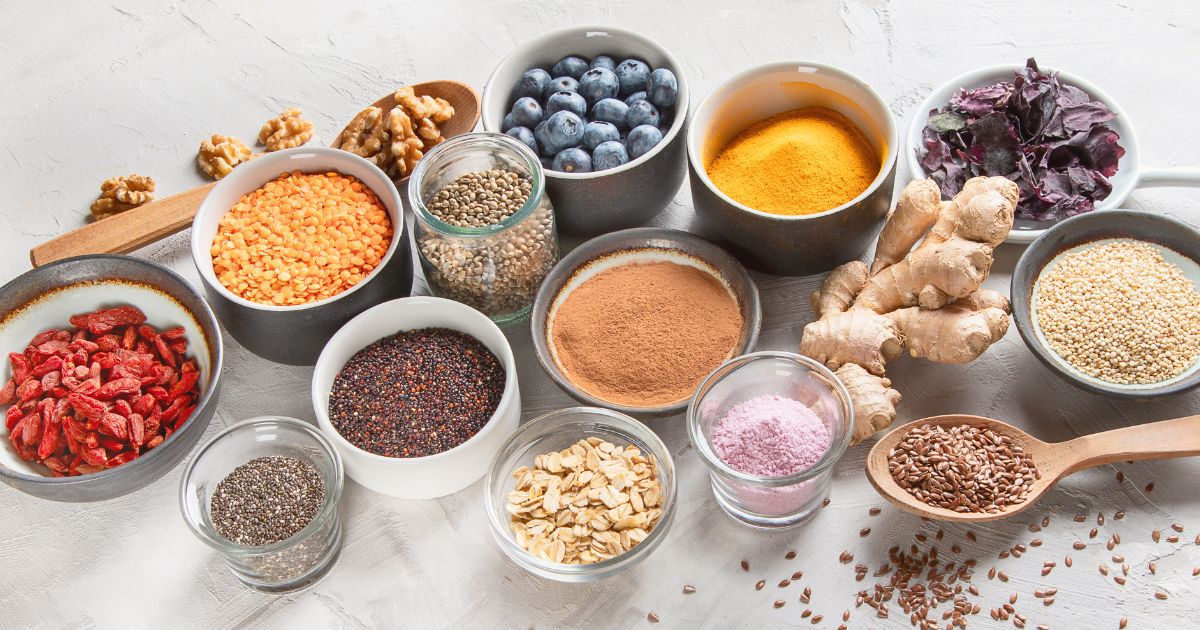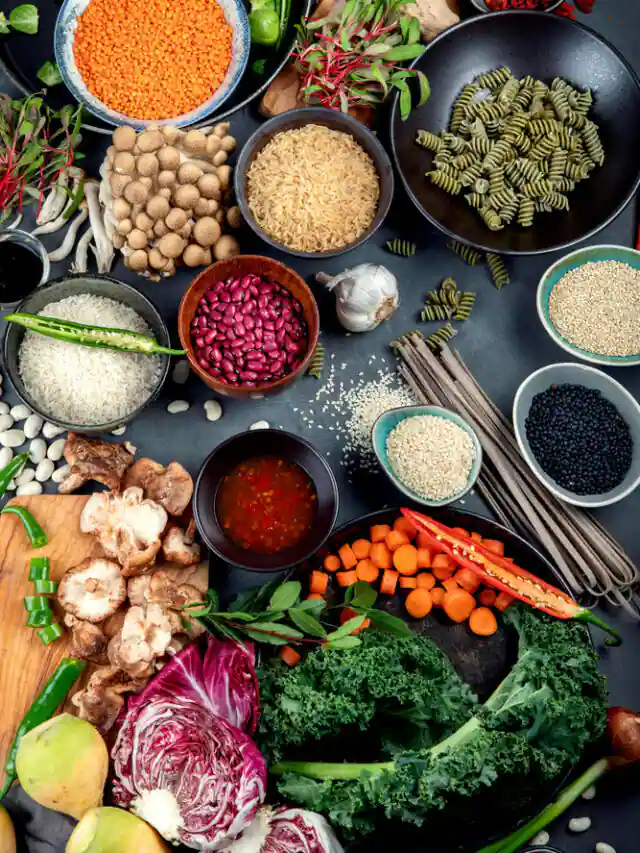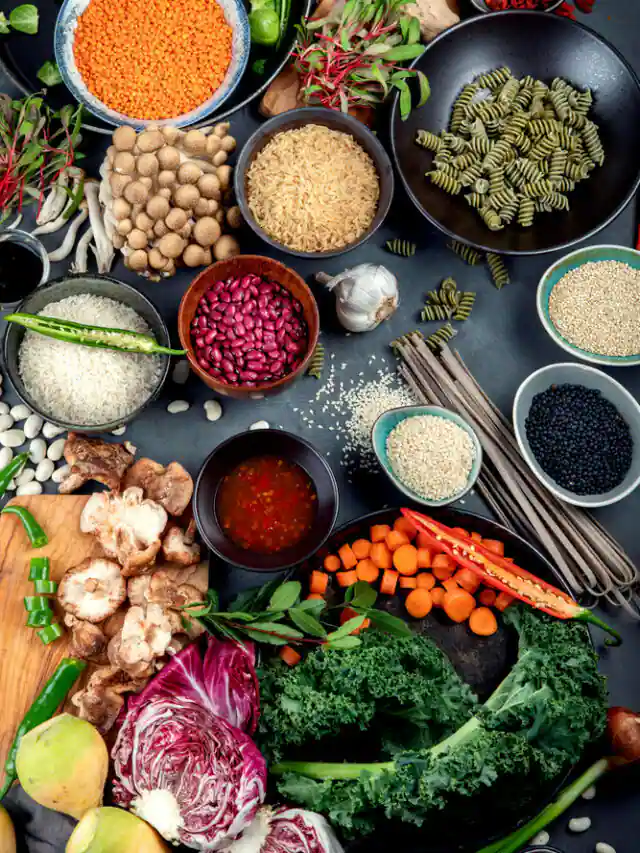As a mother, a home maker, a chef, and a nutritionist-not to mention a lifelong foodie-I know the beautiful chaos of an Indian kitchen. It’s a place where tradition meets taste, and where the secret to a healthy family is often found in the oldest recipes.
We’ve all heard the buzzwords: Quinoa, Acai, Chia Seeds. They’re great, but let’s be honest-they can be expensive and sometimes feel foreign to our palate. The truth, my dear readers, is that the original superfoods, the most potent powerhouses, have been sitting right here in our Mana Vantillu (Our Kitchen) for generations.
In this comprehensive guide, I’m peeling back the layers of global marketing hype to re-introduce you to the real, time-tested champions of health: The 12 Best Superfoods for Indian Families.
These are not just ingredients; they are the anchors of an Ayurvedic lifestyle, the secrets to our grandmothers’ incredible vitality, and the best investment you can make for your family’s health and your wallet. As a money management person, I can assure you that prioritizing these affordable, local gems is the most value-for-money health strategy there is!
Ready to transform your family’s health, one delicious, nutrient-dense bite at a time? Let’s dive in!
What Exactly Makes a Food “Super” in an Indian Context?
The term “superfood” is often a marketing tool, but to a nutritionist and doctor like myself, it signifies a food that is exceptionally nutrient-dense and offers profound, proven health benefits beyond basic nutrition.
In the Indian context, a true superfood must meet three critical criteria:
- High Nutrient Density: Packed with vitamins, minerals, antioxidants, and healthy fats.
- Accessibility and Affordability: Must be readily available at the local sabzi mandi or kirana store and fit a typical family budget.
- Traditional Wisdom & Modern Science: Its benefits are proven by both ancient Ayurvedic texts and modern medical research.
Our traditional Indian diet is already a tapestry of functional foods. We just need to consciously re-integrate them into our busy, modern routines.
The 12 Essential Superfoods for Your Indian Family
Let’s break down the 12 non-negotiable superfoods that belong on every Indian family’s plate.
Category 1: The Golden Trinity of Spices & Roots
Our spices are the true pharmacy of the kitchen. These three are the foundation of Indian wellness.
1. Turmeric (Haldi): The Golden Warrior
- The Powerhouse Component: Curcumin.
- Why It’s a Superfood: Turmeric is arguably the most potent anti-inflammatory and antioxidant known to man. As a doctor, I recommend it daily. It supports liver detoxification, boosts cognitive function, and is a powerful immune modulator. Its anti-cancer and anti-arthritic properties are extensively studied and proven.
- For the Family: Perfect for fighting off the sniffles (hello, Haldi Doodh or Golden Milk!), soothing joint pain (common for active mothers and yoga practitioners!), and promoting a healthy, glowing complexion.
- Chef’s Tip: Always pair turmeric with a pinch of Black Pepper (Kali Mirch). The piperine in black pepper increases the bioavailability of curcumin by up to 2,000%! A dash of ghee or oil also helps absorption as curcumin is fat-soluble.
- Best Utensil Quality: Store your ground turmeric in an airtight glass or stainless steel jar. Avoid plastic as the color tends to stain and the compounds can react over time.
2. Ginger (Adrak): The Digestive Fire Starter
- The Powerhouse Component: Gingerols.
- Why It’s a Superfood: As a nutritionist, I see Ginger as the ultimate digestive aid. It contains powerful anti-inflammatory and antioxidant compounds called gingerols that are excellent for reducing nausea, soothing an upset stomach, and alleviating chronic indigestion. It’s a natural immune booster and an anti-viral agent.
- For the Family: An essential addition to winter kadhas (herbal teas) for cold and cough relief. A small piece chewed with a little salt before a meal stimulates digestive juices.
- Life Coach’s Perspective: Ginger helps you digest food and life. It’s about igniting your inner fire and keeping the flow of energy-or Agni-strong.
- Chef’s Tip: Grate it fresh into your chai, vegetable curries, and lentil soups (dals) for both flavor and health benefits.
3. Garlic (Lahsun): The Heart’s Best Friend
- The Powerhouse Component: Allicin.
- Why It’s a Superfood: Allicin is released when garlic is crushed or chopped and has incredible medicinal properties. It is widely known to improve cardiovascular health, reduce cholesterol and blood pressure, and is a fantastic natural antibiotic and anti-fungal.
- For the Family: Daily inclusion supports a healthy heart for the whole family and helps boost immunity against common infections.
- Money Management Insight: Why spend on expensive supplements when this powerful, affordable bulb can do so much? Use it generously!
- Chef’s Tip: Crush it lightly and let it sit for 5-10 minutes before cooking. This activates the allicin compound, maximizing its health benefits before the heat deactivates it.
Category 2: The Native Grains and Seeds of Strength
Modern diets have become too reliant on refined white rice and wheat. It’s time to switch to the traditional, nutrient-dense alternatives.
4. Millets (Ragi, Bajra, Jowar): The Ancient Grain Comeback
- The Powerhouse Components: High Calcium, Fiber, Iron, and Magnesium.
- Why It’s a Superfood: Millets are a gluten-free marvel. Ragi (Finger Millet) is perhaps the best source of plant-based calcium, crucial for the bone health of growing children, menopausal mothers, and aging parents. Bajra (Pearl Millet) is rich in iron and protein, and Jowar (Sorghum) aids in digestion. They are excellent for managing blood sugar levels due to their low glycemic index.
- For the Family: A perfect replacement for refined grains, offering sustained energy. Ideal for diabetics and weight watchers.
- Yoga Trainer’s View: Millets ground your energy (Prana) and provide slow-releasing fuel, perfect for stamina and focus during long yoga sessions.
- Chef’s Tip: Start slow. Replace one meal’s rice with Ragi Mudde, or use Jowar or Bajra flour for making rotis or dosa batter. They also make excellent, non-fried evening snacks!
5. Flaxseeds (Alsi): The Tiny Omega-3 Treasure
- The Powerhouse Component: Omega-3 Fatty Acids (ALA) and Lignans.
- Why It’s a Superfood: Flaxseeds are the richest plant source of Alpha-Linolenic Acid (ALA), a crucial omega-3 fat essential for brain and heart health. The high fiber content aids digestion, while lignans have powerful antioxidant and hormone-balancing effects, especially beneficial for women’s health.
- For the Family: Essential for brain development in children and maintaining heart health in adults. Great for relieving constipation.
- Content Writer’s Insight: Think of Flaxseeds as the SEO of your diet-a small effort that yields massive long-term results!
- Chef’s Tip: You must grind them! Whole flaxseeds pass through the body undigested. Grind them into a fine powder and sprinkle a tablespoon daily over curds, raita, or in your roti dough. Store the powder in an airtight container in the fridge to prevent the oils from oxidizing (going rancid).
6. Makhana (Fox Nuts): The Healthy Snack Revolution
- The Powerhouse Components: Protein, Fibre, Magnesium, and Low Glycemic Index.
- Why It’s a Superfood: Makhana is a vastly superior alternative to processed chips and fried snacks. They are low in sodium and fat, and rich in protein and fiber, making them excellent for satiety and weight management. They are also traditionally used in Ayurveda to strengthen the kidneys.
- For the Family: The perfect guilt-free snack for late-night cravings or evening tea. High in magnesium, they help with nerve and muscle function, which is great for active kids and stressed-out parents.
- Money Management Tip: Buy them in bulk from a local wholesale market, as they are very light and affordable compared to branded snacks.
- Chef’s Tip: Dry roast them in a pan with just a drop of ghee and a sprinkle of sea salt and pepper, or a light dusting of turmeric and chili powder for a spicy twist. Store in an airtight container for maximum crunch.
Category 3: The Immunity and Digestion Heroes
A healthy gut is the root of a healthy life. These foods are the bedrock of our body’s defense system.
7. Indian Gooseberry (Amla): The Vitamin C Fortress
- The Powerhouse Component: Vitamin C (Ascorbic Acid) and Antioxidants.
- Why It’s a Superfood: Amla boasts one of the highest concentrations of natural Vitamin C on the planet-up to 20 times more than an orange! Vitamin C is crucial for immunity, collagen production (hello, healthy skin and hair!), and maximizing the absorption of iron. It’s also a powerful detoxifier for the liver.
- For the Family: A must-have during flu season. Excellent for promoting strong hair and delaying signs of aging.
- Life Style Blogger’s Choice: Forget expensive collagen supplements; Amla is the original, natural beauty food for glowing skin and thick hair!
- Chef’s Tip: Don’t waste the goodness! You can eat it raw, make a quick amla chutney, or preserve it as a delicious murabba. For convenience, blend a small piece into your morning vegetable juice.
8. Ghee (Clarified Butter): The Golden Gut Healer
- The Powerhouse Component: Butyric Acid, Conjugated Linoleic Acid (CLA), and Fat-Soluble Vitamins (A, D, E, K).
- Why It’s a Superfood: Ghee is not a fat to be feared. As an experienced nutritionist and doctor, I advocate for high-quality, homemade Desi Ghee. It contains Butyric Acid, a short-chain fatty acid that is vital for the health of the gut lining. CLA is linked to improving metabolism. Ghee is also an excellent source of healthy saturated fats needed for hormone production and brain function.
- For the Family: Helps in better absorption of fat-soluble vitamins, lubricates joints, and improves digestion. A teaspoon a day on roti or dal is sufficient.
- Expert in Material Quality: When heating, always use a stainless steel saucepan or a traditional brass/bronze vessel (Kansa) to prevent leaching of toxins from non-stick coatings, especially since ghee can reach high temperatures.
- Chef’s Tip: A dollop of ghee on hot rice, khichdi, or dal elevates flavor and makes nutrients more accessible to the body.
9. Curd/Yogurt (Dahi): The Probiotic Gold Mine
- The Powerhouse Component: Probiotics (Good Bacteria), Calcium, and Protein.
- Why It’s a Superfood: Homemade Dahi is a natural probiotic powerhouse. It introduces beneficial bacteria to your gut, which is essential for a strong immune system, improved digestion, and even a link to better mental health (the gut-brain axis). It’s also an excellent source of easily digestible protein and calcium.
- For the Family: Essential for gut health, especially after a course of antibiotics. A cooling, refreshing addition to any spicy Indian meal.
- Mother’s Recommendation: Dahi is a perfect food for toddlers, children, and pregnant women. Homemade curd, allowed to set overnight in a clay pot (matka), gains an earthy flavor and enhances its probiotic culture compared to store-bought varieties.
- Chef’s Tip: Make your own! The best curd is made with full-fat milk and sets overnight at room temperature. Use a clean steel bowl for setting, and always serve chilled.
Category 4: The Leafy Green and Nutty Pillars
No list is complete without the greens and the healthy fats that fuel our energy and cognitive abilities.
10. Moringa (Drumstick Leaves): The Miracle Tree
- The Powerhouse Components: Vitamins A, C, E, Calcium, Iron, and a Complete Protein Profile.
- Why It’s a Superfood: Moringa leaves are often called the “miracle tree” because they contain a staggering amount of nutrition: more Vitamin C than oranges, more Calcium than milk, more Potassium than bananas, and a full set of essential amino acids (a complete protein!). It’s a natural energy booster and detoxifier.
- For the Family: A powerhouse for addressing common Indian deficiencies like iron and calcium. Excellent for boosting stamina.
- Doctor’s Verdict: Its anti-diabetic and anti-hypertensive properties are increasingly being recognized in modern medicine.
- Chef’s Tip: If the leaves are not available, use Moringa powder. Sprinkle a spoonful into your dal, mix it into your idli/dosa batter, or blend it into your morning smoothie.
11. Walnuts (Akhrot): Fuel for the Mind
- The Powerhouse Components: Alpha-Linolenic Acid (ALA) Omega-3s, Antioxidants, and Polyphenols.
- Why It’s a Superfood: Resembling a tiny brain, the Walnut is the ultimate brain food. It is one of the best whole food sources of Omega-3s and antioxidants, which are vital for fighting inflammation and supporting cognitive function. They are linked to improved memory, better sleep, and reduced risk of heart disease.
- For the Family: An essential addition to a child’s school snack or a parent’s mid-day munch, supporting memory and focus.
- Life Coach’s Advice: Fuel your mind with the right resources. Walnuts are a small, easy habit that pays massive dividends in mental clarity and energy.
- Chef’s Tip: To make them easily digestible, soak 3-4 walnuts overnight and peel off the skin before eating them first thing in the morning. Add them to halwa, sprinkle them over salads, or grind them into a homemade chutney powder.
12. Chickpeas (Chana/Chhole): The Versatile Plant Protein
- The Powerhouse Components: Plant-Based Protein, Complex Carbohydrates, Iron, and Fibre.
- Why It’s a Superfood: Chickpeas are a staple pulse that provide a fantastic, complete source of vegetarian protein (especially when combined with a grain like rice, a classic Indian combination!) that keeps you feeling full and energized. Their high fiber content aids gut health and helps stabilize blood sugar.
- For the Family: An incredibly versatile and budget-friendly source of protein and iron. From chhole-bhature to sundal to hummus (yes, that’s a chana dish!), the options are endless.
- Money Management Tip: Dals and pulses are the most cost-effective way to get high-quality protein into your family’s diet. Buy them dried in large quantities.
- Chef’s Tip: Dry-roast and season kala chana (black chickpeas) for a crunchy, high-protein snack that beats any packaged item on the shelf. The water remaining after boiling chickpeas (aquafaba) can even be whipped up as a vegan egg-white substitute for baking!
My 5 Pillars of a Superfood-Powered Lifestyle (Life Coach & Yoga Trainer Edition)
A superfood is only super if it’s consumed regularly, mindfully, and correctly. Here are my principles for integrating these powerhouses:
Pillar 1: Consistency over Perfection (The Yoga Principle)
Don’t aim for a perfect diet one day a week. Aim for consistent small changes daily. Amla every morning, a pinch of turmeric in every dal, and a serving of millet twice a week-that’s how habits stick and health improves.
Pillar 2: The Utensil-Nutrition Connection
As an expert in material quality, I urge you to look at how you cook. Using the right vessel can preserve nutrients:
- Cast Iron (Loha): Ideal for cooking spinach or any leafy green, as it naturally infuses a small amount of iron into the food.
- Copper (Tambe): Store water in a copper vessel overnight; it’s an ancient Ayurvedic practice to naturally kill bacteria and infuse trace minerals.
- Stainless Steel: The safest all-rounder for daily cooking.
Pillar 3: Eat with the Seasons (The Farmer’s Wisdom)
Our ancient superfoods are all seasonal. Amla is best in winter, Millets thrive in drier climates, and mangoes (also packed with vitamins!) are a summer delight. Eating seasonal produce maximizes nutrient content and is most affordable.
Pillar 4: Fueling Your Day (The Mother’s Schedule)
- Morning Boost: Soaked almonds/walnuts + Amla juice.
- Lunch: A serving of Millet-based roti or khichdi + a Dal with Ghee + Curd.
- Snack: Roasted Makhana or Chickpeas.
- Evening Ritual: A cup of warm Haldi Doodh (Golden Milk) before bed for rest and repair.
Pillar 5: Budget and Buy Local (The Money Manager’s Mantra)
The cheapest food is the one that grows closest to you. Our Indian superfoods are naturally local, seasonal, and therefore cheaper. Avoid expensive, processed “health foods.” Your local sabzi mandi is your best health food store.
Conclusion: Embracing the Wisdom of Mana Vantillu
This is more than a list of ingredients. It is a philosophy-a return to the inherent wisdom of the Indian kitchen.
The power to build a healthy, resilient family lies not in exotic imports, but in the powerful staples that have sustained us for millennia: the fiery warmth of Turmeric and Ginger, the strength of Millets and Chickpeas, the life-giving vitality of Amla and Moringa, and the simple goodness of Ghee and Dahi.
As you embrace these 12 superfoods, you are not just changing your diet; you are investing in your family’s future, honoring your heritage, and creating a Mana Vantillu that truly nourishes the body, mind, and soul.








